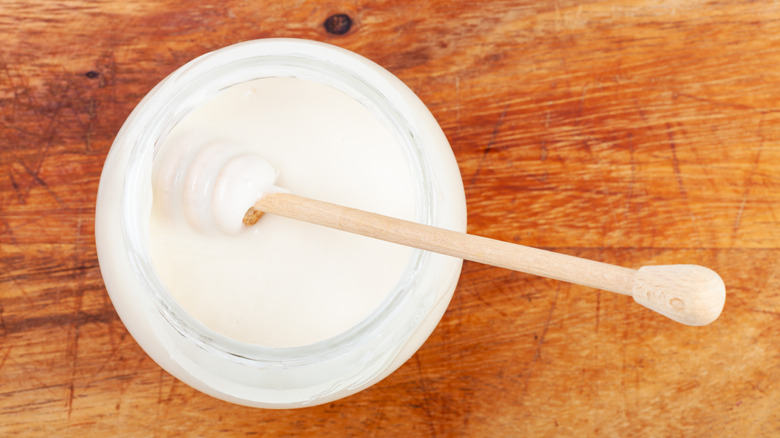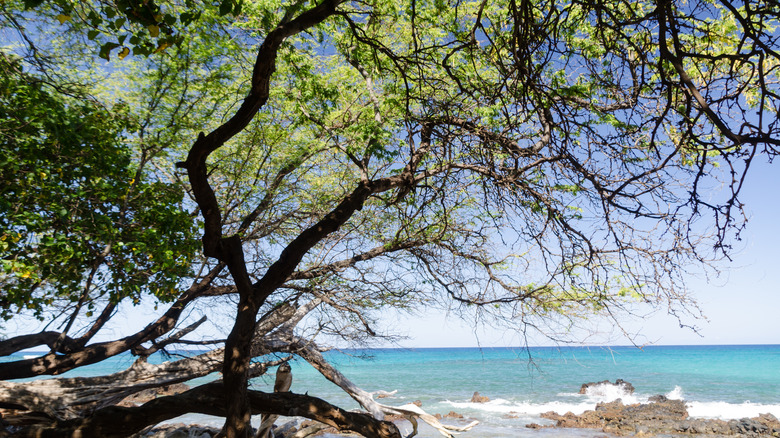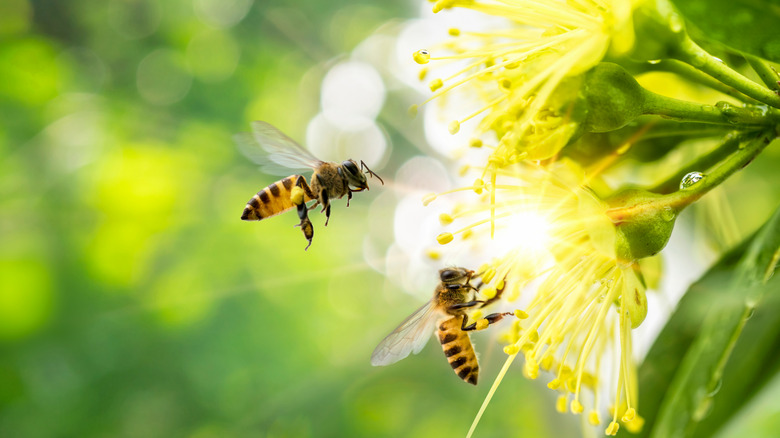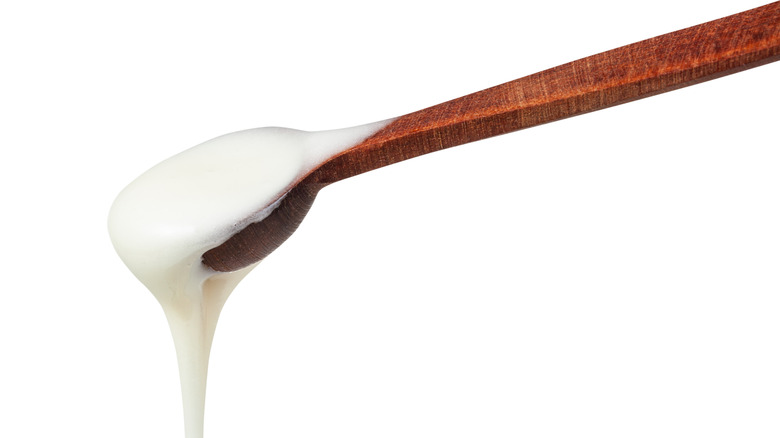What Makes Hawaii's White Kiawe Honey Unique?
Honey might be one of the most underappreciated ingredients on the planet. Sure, people sweeten their teas and cakes with it and drizzle it over their chia bowls, but when we walk past the cutesy bear-shaped bottles of honey in the market we often forget about the benefits of honey. It has incredible anti-inflammatory properties, is full of antioxidants, and is also antibacterial, per Mayo Clinic. Honey bees go through life doing nothing but work. When a bee leaves the hive, it will visit no less than 50 to 100 plants and flowers per trip, looking for pollen and nectar to produce about 1/12 of a teaspoon of honey in its lifetime, according to the American Bee Journal.
All across the world, these buzzing insects produce over 300 types of honey, all varying in sweetness, color, and flavor. Some of the more common types in the United States are clover and wildflower honey, which can be found pretty much all across the country and are named after the primary food source of the bees that produced it. Some kinds of honey are specific to a location, such as the orange blossom honey that is produced where there are orange groves — like in Florida and California. However, Hawaii's kiawe honey is not only specific to location, it's also very unique in taste and appearance.
What is kiawe honey?
Up until 1828, the kiawe tree was found exclusively in Ecuador and Peru, per Atlas Obsura. The desert mesquite tree was brought to Hawaii that year by a Catholic missionary where it thrived due to the favorable weather. According to Forbes, that tree now grows in the thousand-acre kiawe forest, located in the Puako region of the island where it reaches up to 60 feet in height and is watered, in part, by the deep roots that are able to reach the freshwater run-offs from the volcanoes, per ABC Stores. Also resilient to the nearby saltwater, the kiawe tree produces bright yellow flowers that can bloom at any given time and attract nearby bees like moths to a flame.
Kiawe honey is over 99% monofloral, which means that it comes almost exclusively from the kiawe tree flower nectar, a difficult feat to achieve and maintain since bees go wherever they want, whenever they want. The honey itself is unlike any other, having an opaque, pearly-white color and creamy texture.
How is kiawe honey made?
The Asheville Bee Charmer suggests that bees will travel between 2 and 4 miles away from their hives to seek nectar and pollen, therefore, beekeepers in Puako keep their hives and boxes close to the kiawe forest. The process necessary to collect the prized honey is a painstaking one. According to Atlas Obscura, if the honey is gathered too soon, it ferments; but if gathered too late, the honey will crystallize. Granted, both the honey's appearance and texture are a result of natural crystallization, but too much will give you a gritty texture, which is never pleasant. While beekeepers and honey producers can gently heat the crystallized honey to recover the creamy texture, that process affects the flavor.
Like any ingredient produced entirely by nature, kiawe honey is at the mercy of its surroundings. Atlas Obscura points out that the kiawe forest has been affected by forest fires and parasites that attack the bee population, both of which will affect the amount of honey available in any given period of time. Fortunately, the land dedicated to the kiawe trees in Puako contains soil rich enough that they can regrow even after devastation, and provide a natural and safe habitat for the bees.
What does this honey tastes like and how should use it?
Some critics describe the creamy sweet flavor as being similar to vanilla almond, while others detect an aftertaste of soft menthol, per Atlas Obscura. The Rare Hawaiian Honey Company suggests it has a tropical flavor that is unequaled by any other type of honey. Authentic kiawe honey will have no additional ingredients beyond the honey itself and is a fantastic natural food source. According to The Republic of Tea, it contains about 60 calories and 17 grams of sugar in every one-tablespoon serving. This honey is best eaten fresh because of its amazing texture and flavor. Spread it generously on toast, fresh bread, or cookies — or mix it into homemade peanut butter. For a savory spin, include a bowl of it on your next cheese board.
Kiawe honey is extremely rare, in part because the kiawe tree has been nearly obliterated in its native South American countries, so the honey is only produced in Hawaii (via Forbes). This and the fact that it is monofloral make it one of the most expensive kinds of honey on the market. Outside of purchasing it in the Aloha state, the honey can easily be ordered online. A jar of kiawe honey will keep anywhere from three to four months at room temperature, but if you have any left after this period of time, definitely don't throw it away. Just transfer it to the refrigerator. Crystallization will happen, but a gentle soak in a pan of warm water will restore the original texture.



